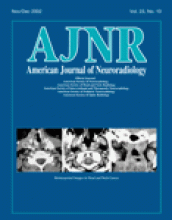Abstract
BACKGROUND AND PURPOSE: The risk of intraprocedural aneurysm perforation in patients with previously ruptured aneurysms tends to be higher than that of patients with previously unruptured aneurysms, but a statistically significant difference has not been shown. Our purpose was to define the rates of occurrence and of morbidity and mortality associated with aneurysmal perforation associated with coil embolization.
METHODS: A meta-analysis of the results from 17 published retrospective reports of aneurysm perforations complicating therapy with Guglielmi detachable coils (GDCs) was performed. Rates of perforation and associated morbidity and mortality in previously ruptured and unruptured aneurysms were calculated. The mechanism of perforation was noted.
RESULTS: The risk of intraprocedural perforation was significantly higher in patients with ruptured aneurysms compared with patients with unruptured aneurysms (4.1% vs 0.5%; P < .001). The combined risk of permanent neurologic disability and death associated with intraprocedural aneurysm perforation was 38% for ruptured aneurysms and 29% for unruptured aneurysms. The morbidity and mortality rates with perforations caused by coils (39%) and microcatheters (33%) were similar. The morbidity and mortality rate for microguidewire perforations was considerably lower (0%, n = 4) than the rates for coils and microcatheters, but number of cases was too low to indicate statistical significance.
CONCLUSION: The risk of aneurysm perforation during GDC therapy is much higher in patients with previously ruptured aneurysms than in those with unruptured aneurysms. The morbidity and mortality rates are substantial for perforations caused by coils and microcatheters, whereas they seem to be much lower for perforations caused by microguidewires.
- Copyright © American Society of Neuroradiology












